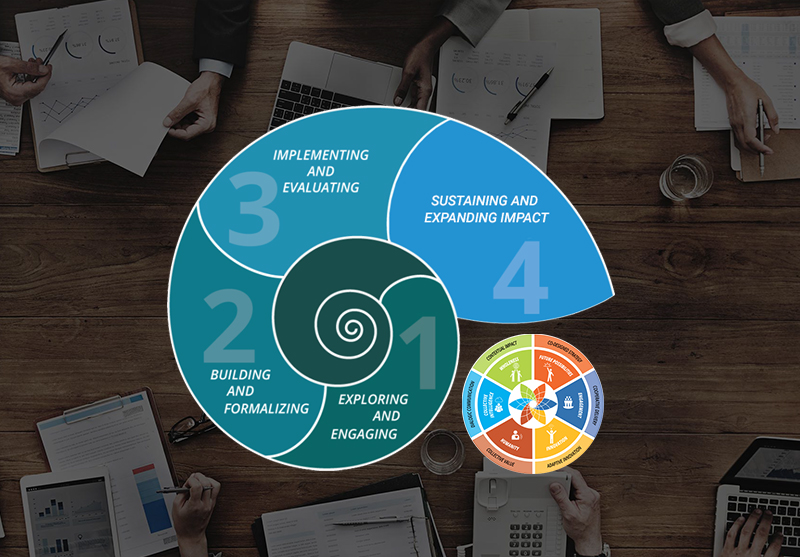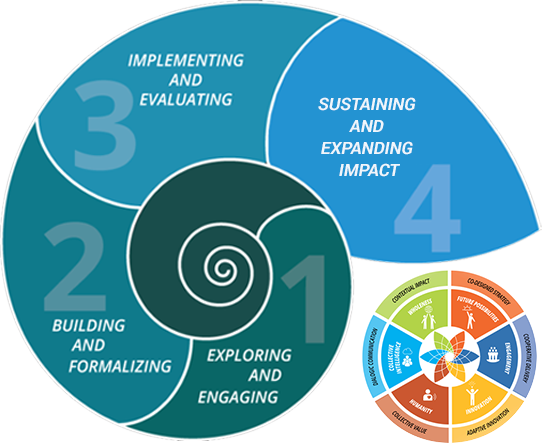Stakeholders are people or institutions that have an interest in a particular course of development, or a particular decision, either as individuals or as representatives of a group. This includes people who influence a decision, who are key players in implementation, or who are affected by the development. The stakeholder system is composed of all institutional (or sometimes individual) actors that are relevant with regard to the issue that is in focus for a collaborative initiative. Most sustainability challenges have complex stakeholder systems with actors from communities, public sector, civil society, private sector as well as academic or educational institutions. In order to decide who is relevant to be considered part of a stakeholder system, the following questions can serve as guidance:
<!–
–>

The more complex and difficult to change the sustainability challenge, the larger the stakeholder system.
In phase 1 of Exploring and Engaging it is important to understand the patterns of the wider stakeholder system well enough in order to identify the key stakeholders to start with.
In phase 2 of Building and Formalizing it is helpful to become clear about the patterns in the collaboration ecosystem that has been created.
In phase 3 of Implementing and Evaluating it is useful to understand the different perspectives and views stakeholders have about the implementation.
In phase 4 of Sustaining and Expanding Impact it is paramount to re-explore the wider stakeholder system as a prerequisite for planning how to scale impact.
Transformative change in multi-stakeholder collaboration is effective with structured engagement of all relevant actors and high quality process architectures The Dialogic Change Model is a process methodology that allows for the result- oriented planning and implementation of collaborative change.
It is based on 25 years of experiences in support of multi-stakeholder processes and combines ancient human dialogue knowledge with modern approaches to co-creation and collective intelligence. It structures the design and implementation of transformative change into four distinct phases that help actors apply the Collective Leadership Compass in the most effective way.
LEARN MORE

The Compass can be used as a lens to look at the patterns in the stakeholder system. This helps to identify entry points for collaborative change.
When you use the Compass remember that the purpose is to enliven the collaboration pattern to achieve better results.
Undertaking thorough research about the context of a planned collaborative change initiative is important throughout all phases of the Dialogic Change Model, but particularly in phase 1. This is based on available facts and figures from research and analysis, but it also requires to look at how stakeholders interact, how they relate to the envisaged change and what perspective they would bring to the envisaged collaborative change initiative. It usually includes most or all of the below approaches.
A review of how you have implemented the essential steps of each Phase of the Dialogic Change Model helps you to improve the collaboration quality and ensure tangible results.
A comprehensive study to assess the situation prior to the planning of a project or initiative that helps develop the design of the collaborative change. It usually includes a stakeholder analysis and stakeholder interviews.
An analysis of key stakeholders’ interest in and influence on the topic of the envisaged change initiative.
A map of the relationship between key stakeholders who are most relevant for becoming part of a collaboration ecosystem.
Inspiring engagement conversations for a planned initiative or feedback conversations for an ongoing initiative that informs strategy with stakeholder views and perspectives.
Collaborative and transformative change initiatives intervene into an already existing system of actors and institutions that may or may not function well together. Understanding the patterns in such a stakeholder system is paramount for designing process architectures that achieve their goals.